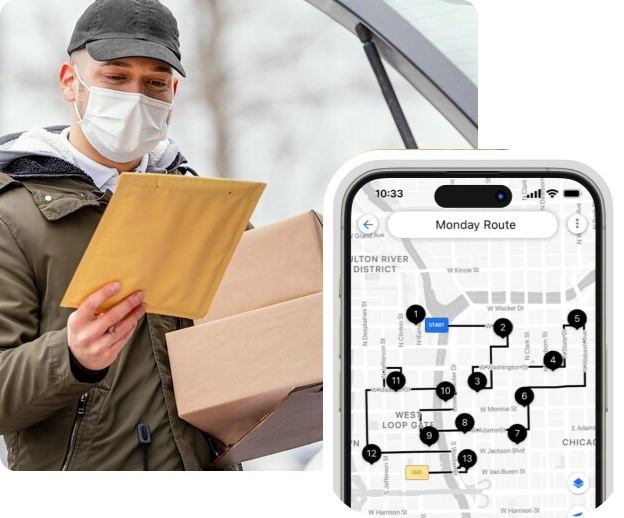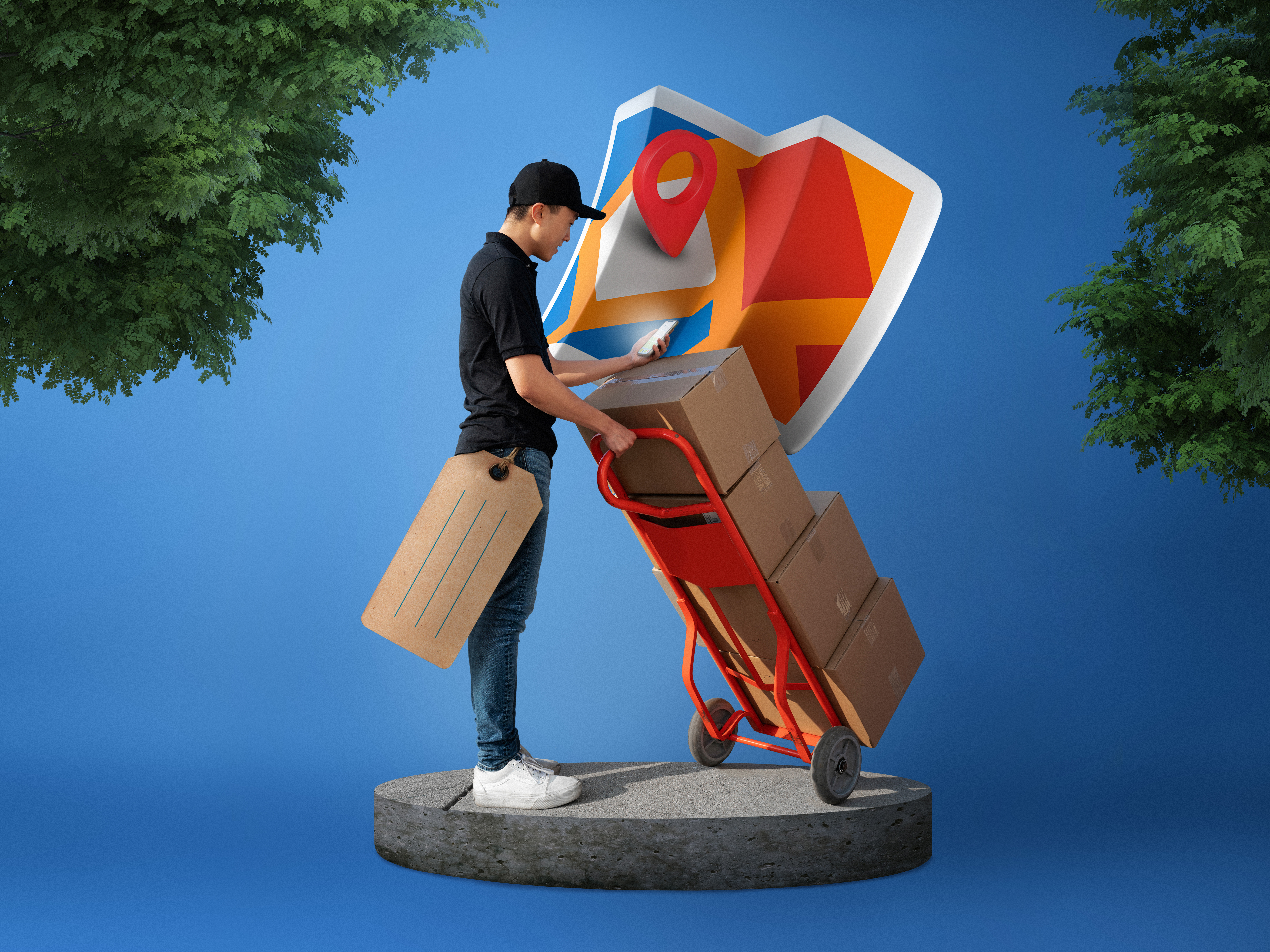What is the key solution to ensure a faster delivery service in 2025?

Strong 8k brings an ultra-HD IPTV experience to your living room and your pocket.
“Speed is the new currency of commerce.” This quote couldn’t be more relevant in 2025. With over 70% of consumers now expecting same-day delivery and more than 40% choosing instant delivery when available, businesses are scrambling to keep up with the breakneck pace of logistics innovation.
From online pharmacies to fashion retailers and food aggregators to B2B eCommerce platforms, everyone is chasing the same goal—faster, cheaper, more transparent delivery. But while the race for speed intensifies, many are still navigating outdated systems, high delivery costs, and unpredictable customer demands.
So, what’s actually shaping this high-speed transformation? In this post, we break down the latest instant delivery trends, their business impacts, and the future of last-mile delivery – plus how companies can stay competitive in this rapidly shifting logistics landscape.
What Are the Latest Delivery Trends in 2025?
The delivery game in 2025 is a whole new world. Here are the top last mile delivery trends 2025 is witnessing:
1. Instant & Same-Day Delivery
Speed is no longer a luxury—it’s an expectation. Whether it’s a forgotten birthday gift or a critical medicine refill, instant delivery and same-day delivery are defining customer satisfaction.
Thanks to advanced route optimization software, dark stores, and micro-fulfilment centres, brands can deliver in under 60 minutes in urban zones. This shift is creating immense pressure on traditional logistics operations to upgrade—or be left behind.
2. Hyperlocal Delivery
Local is the new global. Hyperlocal delivery, a new term which means where products are sourced and delivered within a few miles—is booming. Think groceries, bakery orders, or emergency tech repairs. These services thrive on speed, proximity, and precision.
For delivery startups and D2C brands, it’s opening up exciting new business models—but also requiring sophisticated delivery logistics for 2025 demands, like smart routing, real-time ETAs, and driver tracking.
3. Automation & AI-Driven Logistics
Robots packing orders. Drones in the sky. AI plotting the fastest delivery paths. Welcome to the future.
From AI-based route optimisation to smart warehousing, automation is rewriting delivery playbooks. It’s reducing human errors, cutting down delivery times, and reshaping logistics into a more data-driven, efficient engine.
4. Sustainable Delivery Practices
Customers care about speed—but they also care about the planet. Sustainable last-mile delivery solutions are rapidly gaining traction. Electric delivery vans, eco-friendly bikes, and sustainable packaging have become the norm in many large cities.
Companies investing in green delivery not only reduce their carbon footprint but also gain loyalty from sustainability-conscious consumers.
5. Omnichannel Fulfilment
It’s no longer about online or offline—it’s about both. Omnichannel fulfilment bridges eCommerce and physical stores, allowing customers to buy online and receive fast, flexible deliveries from the nearest location.
This blended model requires advanced inventory management and seamless system integration to keep up with customer expectations.
6. Real-Time Visibility & Data Analytics
Customers want to know: Where’s my order? When will it arrive?
Delivery technology trends in 2025 prioritise visibility. Live tracking, automated status updates, predictive delays, and personalised delivery windows have become standard.
At the backend, analytics helps managers monitor performance, optimise routes, and detect delivery issues before they become customer complaints.
Why These Trends Matter: Business Impacts in 2025
The rise of instant delivery trends isn't just about convenience—it's about survival.
- Customer Expectations: People now demand near-instant gratification. Missed ETAs or slow delivery? That’s a lost customer.
- Operational Pressure: Old systems can’t handle modern delivery needs. Businesses must evolve or risk collapse under complexity.
- Financial Strain: Faster deliveries often mean higher costs. Without smart tech, profit margins can shrink fast.
- Competitive Threats: Your competitors are already adapting. If you can’t match their speed and service, you’ll fall behind.
- Opportunity for Growth: Companies that adopt early, optimise wisely, and scale smartly can lead the delivery revolution.
Key Challenges Businesses Face Adopting These Trends
Staying ahead in 2025 isn’t easy. Let’s unpack the biggest hurdles businesses face in last-mile delivery:
- Outdated legacy systems that slow down delivery orchestration.
- Without smart routing, deliveries become slower, costlier, and far less efficient.
- Skyrocketing delivery costs, especially in same-day and express segments.
- Scalability bottlenecks as operations grow faster than infrastructure.
- Driver shortages are creating fulfilment delays and overworked staff.
- Poor tracking and visibility result in delayed arrivals and decreased customer satisfaction.
Behind these challenges lies a deeper pain: the fear of losing customers, frustration over inefficiencies, and anxiety about scaling unsustainable operations.
Why Instant Delivery Trends Are Changing the Game for Last-Mile Businesses
Instant delivery is rewriting the last-mile playbook. It’s no longer about moving packages from point A to B—it’s about doing it in under an hour, with live updates, zero errors, and optimal costs.
That’s where Fixlastmile comes in. Its route optimization software and smart dispatching tools are built for the realities of 2025. From automating driver allocation to reducing fuel wastage and boosting on-time deliveries, Fixlastmile helps businesses transform their last-mile logistics from a cost centre into a competitive edge.
How Businesses Can Adapt and Stay Competitive
Ready for the next phase of last-mile delivery? Here's how to stay competitive:
- Adopt Route Optimisation Software: Smarter routing = faster deliveries, lower fuel costs, and happier customers.
- Invest in Automation: Automate fulfilment, driver dispatch, and order tracking to streamline operations.
- Boost Delivery Visibility: Enhance delivery transparency with live tracking and proactive status updates.
- Embrace Sustainability: Shift to EVs, green packaging, and low-emission logistics.
- Partner with Tech Providers: Leverage platforms like Fixlastmile for scalable, tech-powered delivery logistics.
Every step towards tech-forward operations is a step away from outdated, fragile systems.
Future Outlook: What’s Next in Delivery Trends Beyond 2025?
What’s coming next? Efficient delivery systems, quick turnarounds, and personalization at every step:
- Autonomous delivery vehicles will reduce driver dependency.
- Blockchain may redefine supply chain transparency and tracking.
- Hyper-personalised delivery experiences will offer delivery exactly when and how customers want it.
The key? Stay ahead by staying agile.
Conclusion
The world of delivery is evolving at lightning speed. What was cutting-edge last year is outdated today.
In 2025, instant delivery isn’t a trend—it’s the new normal. To keep up, businesses must rethink their operations, embrace smarter logistics like last mile delivery software, and future-proof their last-mile delivery strategy.
The good news? With the right tech, partners, and mindset, staying competitive is not only possible—it’s scalable.
FAQs
1. What is instant delivery, and why is it important in 2025?
It refers to deliveries within 1–2 hours. It’s important because it meets rising customer expectations and enhances loyalty.
2. How does hyperlocal delivery benefit businesses and customers?
It enables fast, low-cost delivery from nearby locations, increasing convenience and reducing carbon footprint.
3. What are the biggest challenges in last-mile delivery today?
Outdated systems, poor route planning, high costs, and lack of visibility top the list.
4. How can route optimisation software improve delivery efficiency?
By finding the best delivery routes, it reduces time, fuel use, and missed ETAs.
5. Why is delivery visibility critical for customer satisfaction?
Customers want real-time updates. Lack of visibility leads to uncertainty and complaints.
6. How can businesses reduce last-mile delivery costs?
By automating dispatch, using electric vehicles, and optimising routes.
7. What role does automation play in modern delivery systems?
It streamlines fulfilment, improves accuracy, and scales operations effortlessly.
8. How can businesses prepare for future delivery trends?
Stay informed, invest in tech, and partner with solutions like Fixlastmile to stay ahead.
Note: IndiBlogHub features both user-submitted and editorial content. We do not verify third-party contributions. Read our Disclaimer and Privacy Policyfor details.



